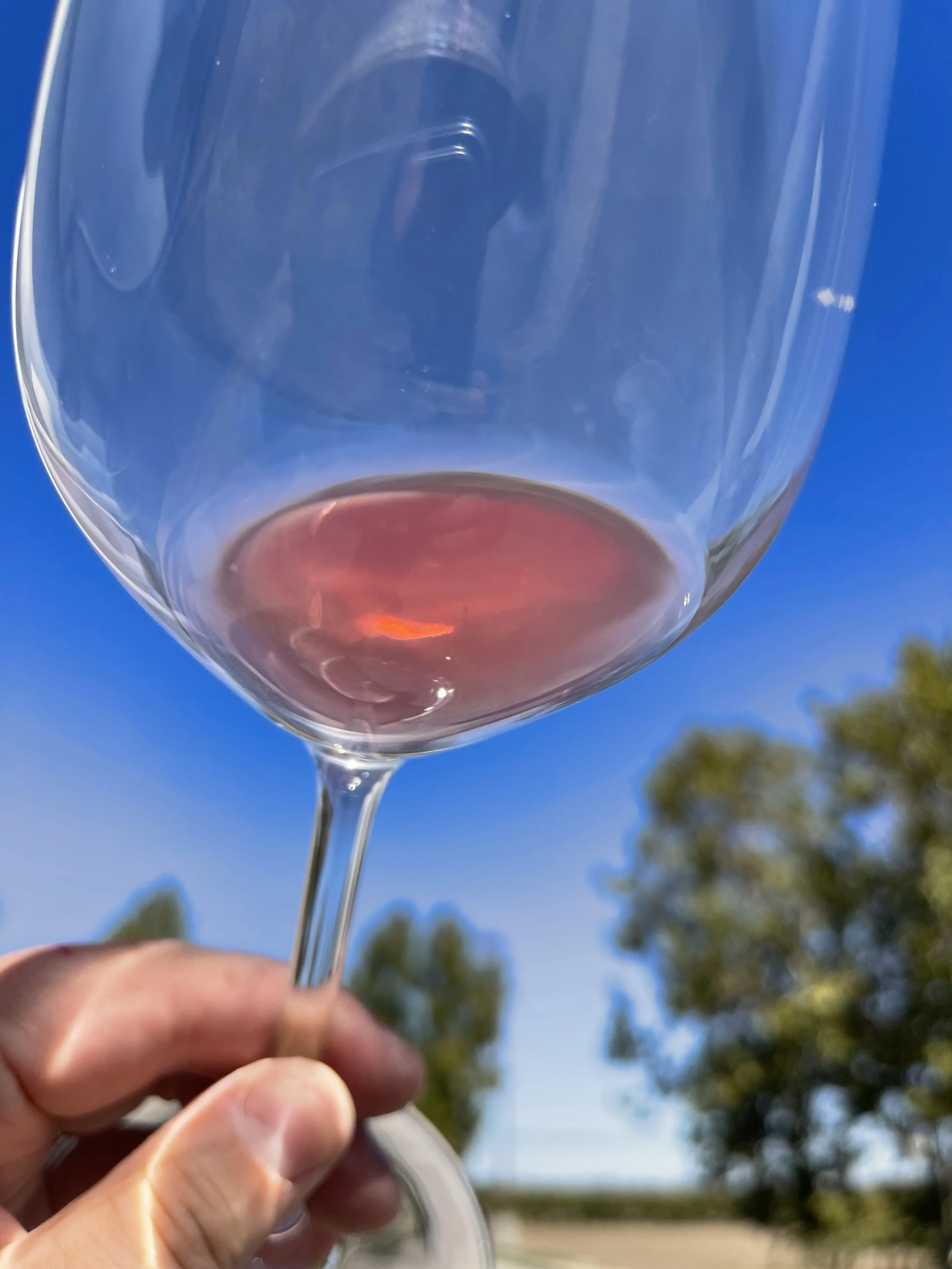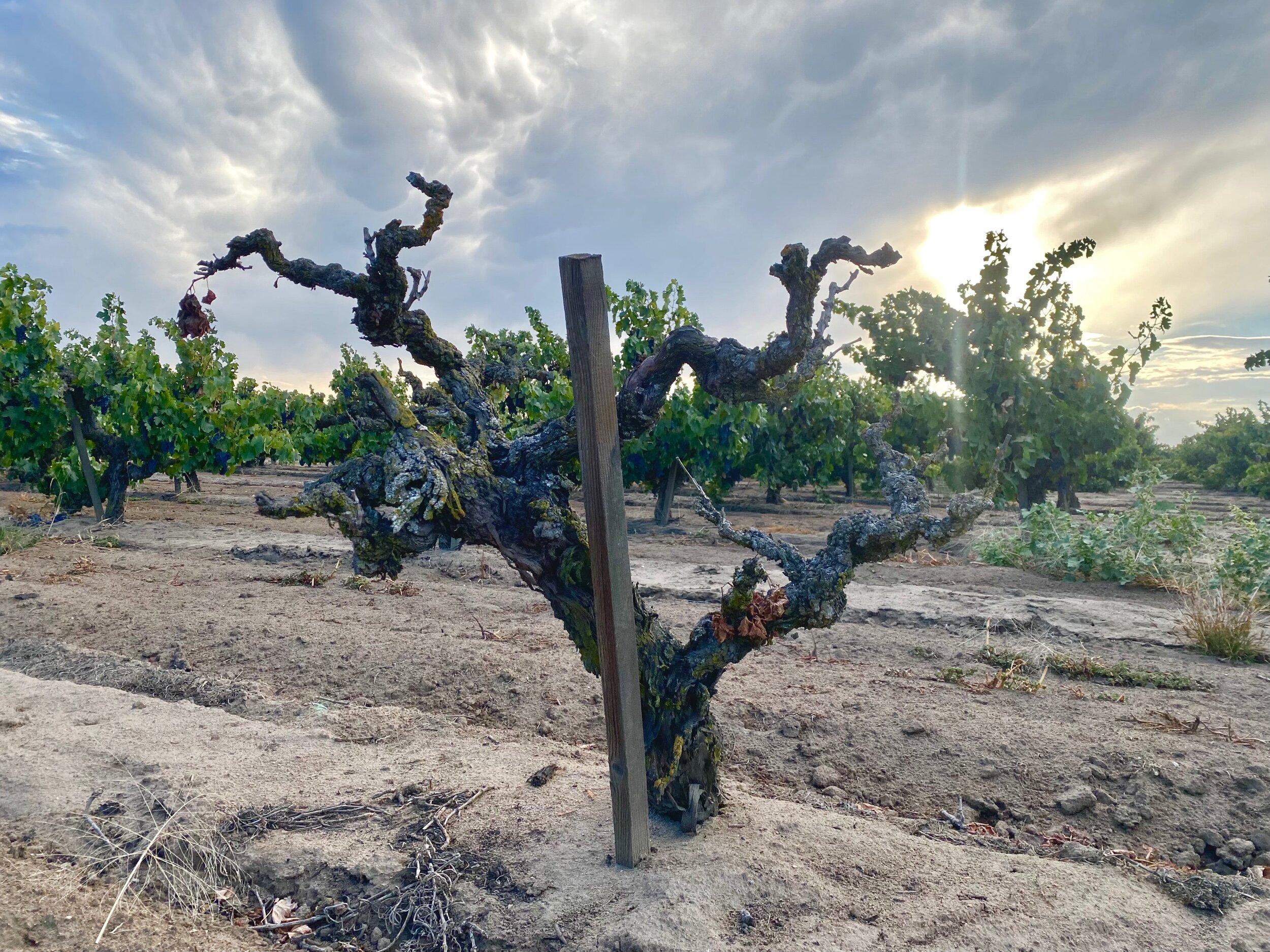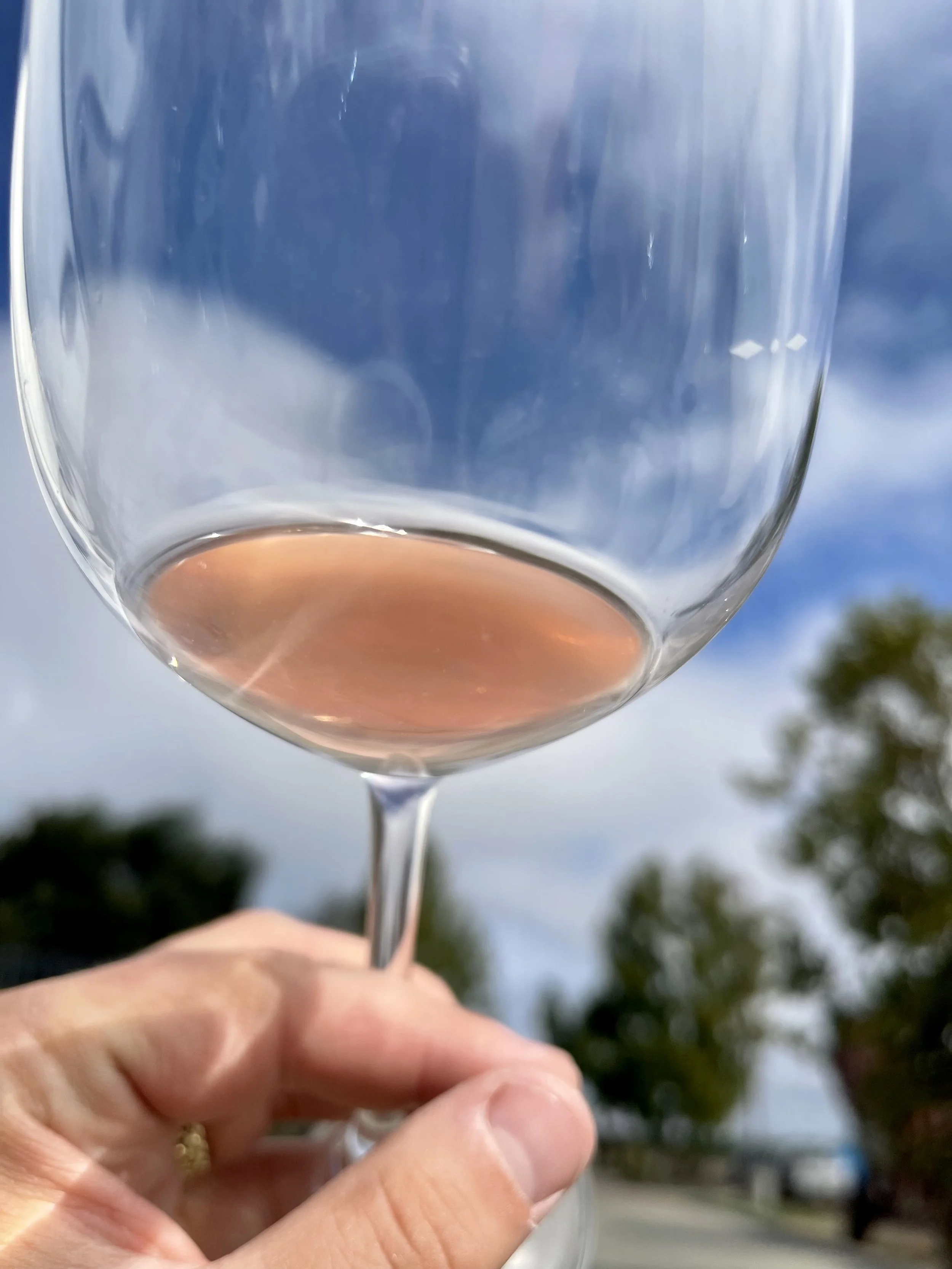 Image 1 of 10
Image 1 of 10

 Image 2 of 10
Image 2 of 10

 Image 3 of 10
Image 3 of 10

 Image 4 of 10
Image 4 of 10

 Image 5 of 10
Image 5 of 10

 Image 6 of 10
Image 6 of 10

 Image 7 of 10
Image 7 of 10

 Image 8 of 10
Image 8 of 10

 Image 9 of 10
Image 9 of 10

 Image 10 of 10
Image 10 of 10











2022 Rosé of Carignan Lodi Ancient Vine Frozen Grape Juice
Each pail includes five and quarter gallons of grape juice. Product will arrive partially frozen.
Lodi, CA
Brix: 22.4, pH: 3.95, TA: 3.5 g/L (full juice panel in photos)
Harvested September 20th, 2022
Each pail includes five and quarter gallons of grape juice. Product will arrive partially frozen.
These ancient vines have remained in production since being planted in 1906 (15 years before prohibition!). The property was acquired by the Van Ruiten family in the 1980’s with an agreement that the vines not be ripped out to make way for the expanding housing developments. The Van Ruitens are third-generation Lodi grape growers and one of the top wine destinations in Lodi.
Carignan is most prominent in the warm climates of Southern France and Northern Spain, where it also goes by the names Carinena and Mazuelo. Carignan usually displays medium tannin, medium alcohol, and medium acidity; making it a very a well-balanced wine ideally suited for food pairings.
“Lying directly east of the largest gap in California’s Coast Ranges – the San Francisco Bay – Lodi experiences a Mediterranean climate characterized by warm, dry summers and cool, wet winters. During the growing season, warm, sunny days allow for optimal ripening of winegrapes. By contrast, cool winds off the Pacific Ocean which travel inland over a network of waterways act a natural air conditioner for the region, helping winegrapes maintain racy acidity. Together, geography and climate provide Lodi the unique ability to grow an unusually diverse range of winegrapes. Though Lodi is sometimes perceived as a hot-climate region, in reality, average temperatures are comparable to or even lower than other well-known regions like Healdsburg (Sonoma), St. Helena (Napa Valley), and Paso Robles."“Lodi’s diverse soils were formed thousands of years ago through geological events and alluvial waters. Two major rivers originating in the Sierra Nevada–the Mokelumne and Cosumnes—have brought soils rich in granitic-based minerals that complement the fine sandy loam soils surrounding the community of Lodi. Recent expansion has driven vineyards into previously undeveloped areas along the eastern edge of the appellation where a range of older lower fertility soils are found; these ideal winegrowing soils range from heavier clay-based soils in the south to well-drained stony soils in the north. A few of the more dominant soils in the region include Tokay Fine Sandy Loam, Tuscan Stony Loam, San Joaquin Loam, and Archerdale Clay Loam. The fine, well-draining Tokay Sandy Loam is home to the majority of Lodi's fifty- to one hundred-year-old Zinfandel vines.”
Each pail includes five and quarter gallons of grape juice. Product will arrive partially frozen.
Lodi, CA
Brix: 22.4, pH: 3.95, TA: 3.5 g/L (full juice panel in photos)
Harvested September 20th, 2022
Each pail includes five and quarter gallons of grape juice. Product will arrive partially frozen.
These ancient vines have remained in production since being planted in 1906 (15 years before prohibition!). The property was acquired by the Van Ruiten family in the 1980’s with an agreement that the vines not be ripped out to make way for the expanding housing developments. The Van Ruitens are third-generation Lodi grape growers and one of the top wine destinations in Lodi.
Carignan is most prominent in the warm climates of Southern France and Northern Spain, where it also goes by the names Carinena and Mazuelo. Carignan usually displays medium tannin, medium alcohol, and medium acidity; making it a very a well-balanced wine ideally suited for food pairings.
“Lying directly east of the largest gap in California’s Coast Ranges – the San Francisco Bay – Lodi experiences a Mediterranean climate characterized by warm, dry summers and cool, wet winters. During the growing season, warm, sunny days allow for optimal ripening of winegrapes. By contrast, cool winds off the Pacific Ocean which travel inland over a network of waterways act a natural air conditioner for the region, helping winegrapes maintain racy acidity. Together, geography and climate provide Lodi the unique ability to grow an unusually diverse range of winegrapes. Though Lodi is sometimes perceived as a hot-climate region, in reality, average temperatures are comparable to or even lower than other well-known regions like Healdsburg (Sonoma), St. Helena (Napa Valley), and Paso Robles."“Lodi’s diverse soils were formed thousands of years ago through geological events and alluvial waters. Two major rivers originating in the Sierra Nevada–the Mokelumne and Cosumnes—have brought soils rich in granitic-based minerals that complement the fine sandy loam soils surrounding the community of Lodi. Recent expansion has driven vineyards into previously undeveloped areas along the eastern edge of the appellation where a range of older lower fertility soils are found; these ideal winegrowing soils range from heavier clay-based soils in the south to well-drained stony soils in the north. A few of the more dominant soils in the region include Tokay Fine Sandy Loam, Tuscan Stony Loam, San Joaquin Loam, and Archerdale Clay Loam. The fine, well-draining Tokay Sandy Loam is home to the majority of Lodi's fifty- to one hundred-year-old Zinfandel vines.”



